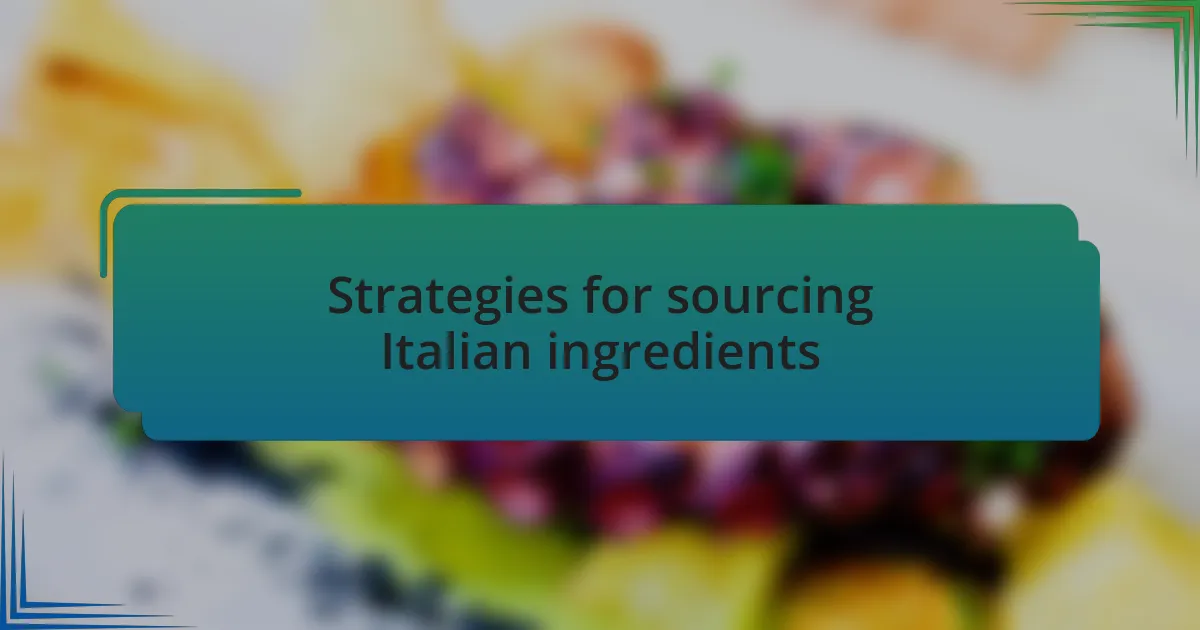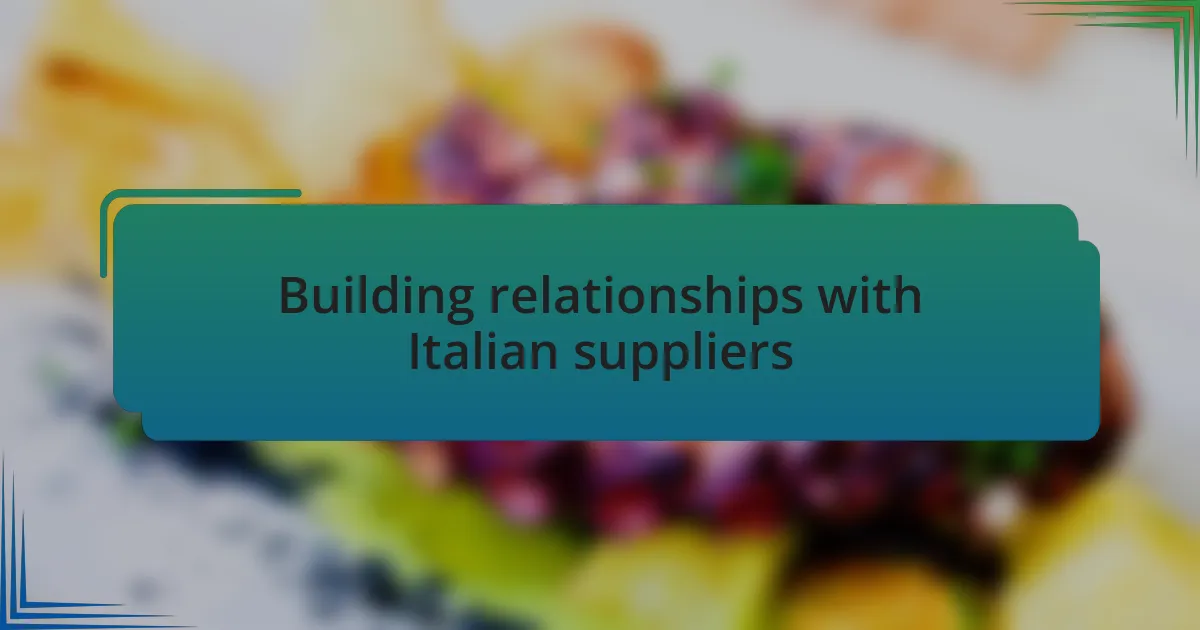Key takeaways:
- Emerging food trends reflect societal shifts, emphasizing health, sustainability, and cultural fusion.
- Adapting recipes according to consumer feedback enhances personal connections and satisfaction.
- Sourcing authentic ingredients through relationships with local producers enriches culinary experiences.
- Building strong supplier relationships fosters trust and connects customers to the story behind each ingredient.

Understanding emerging trends in food
Emerging trends in food can often reflect broader societal shifts, and I’ve seen this firsthand in my own cooking and trading practices. For instance, the rise of plant-based diets prompted me to experiment with traditional Italian dishes by incorporating more vegetables and legumes. It was surprising to see how much flavor and authenticity could still shine through with these adaptations.
In my experience, food trends often highlight a growing consumer awareness surrounding health and sustainability. I remember when I first experimented with organic ingredients in my recipes; the vibrant tastes and colors were not only visually appealing but also made me feel more connected to the food I was preparing. How can we ignore the fact that more people care about where their food comes from and the impact it has on their health and the environment?
Moreover, the increasing popularity of cultural fusion dishes compels us to rethink classic recipes while honoring their origins. I once created a unique twist on a Neapolitan pizza by adding unconventional toppings that encompassed different cuisines. It was fascinating to see not just the initial reactions of diners, but how those experiences sparked rich conversations about their own cultural dishes. Isn’t it exciting to think about how food can unite us and tell our stories through ever-evolving flavors?

Adapting to consumer preferences
Adapting to consumer preferences requires an active engagement with feedback. I remember a time when I hosted a small tasting event, eager to present my latest Italian creations. The responses were eye-opening; some guests raved about a lighter lasagna I made with zucchini noodles instead of pasta, while others longed for the classic, comforting version. This experience reinforced the idea that listening to consumers and adjusting recipes accordingly creates a more personal connection with my audience.
As I shifted to online sales, I noticed that the demand for convenience soared. I began offering meal kits featuring essential ingredients for traditional Italian dishes, allowing customers to enjoy authentic flavors without the hassle. The joy of receiving testimonials about families bonding over cooking together made me realize how important it is to cater to modern lifestyles, while still honoring the culinary heritage that makes Italian food so beloved.
I often find myself pondering how to create a balance between tradition and innovation in my offerings. When I introduced a seasonal menu inspired by local produce, I witnessed a spark of curiosity from my customers. They appreciated the thoughtfulness behind the ingredients and relished the opportunity to explore new dishes that still felt rooted in Italian culture. Isn’t it fulfilling to know that adapting to preferences not only enhances satisfaction but also fosters a deeper appreciation for the cuisine?

Strategies for sourcing Italian ingredients
Sourcing authentic Italian ingredients can be quite the adventure. I recall a trip to a quaint market in Tuscany, where I stumbled upon artisanal cheeses made by local producers who shared their stories with passion. Engaging directly with such suppliers not only enriched my inventory but also provided me with unique flavors that truly embody the essence of Italian cuisine. Have you ever tasted a cheese that seemed to tell you tales of its origin? That’s the kind of connection I strive for, bringing the heart of Italy right to my customers’ tables.
Building strong relationships with importers has also been pivotal in my sourcing strategy. This past year, I collaborated with a family-run business specializing in Italian olive oil. Their dedication to quality resonated with me; they passionately explained the cultivation process and the nuances of different regions. This collaboration not only ensured that I offered premium products but also opened doors to exclusive tastings for my customers. Isn’t it fascinating how a simple ingredient, like olive oil, can elevate a dish when it’s sourced with intention?
Lastly, I’ve learned that attending food expos can unveil hidden gems in the world of Italian ingredients. At one such event, I discovered a brand that produces organic San Marzano tomatoes, which I now consider a staple in my kitchen. When I showcased dishes featuring these tomatoes, the vibrant flavors sparked joy among my diners. It made me wonder—how often do we take for granted the quality of our ingredients? I believe that taking the time to thoughtfully curate what goes into a dish can transform the dining experience, making it not just a meal, but a journey into Italian heritage.

Building relationships with Italian suppliers
Building relationships with Italian suppliers has been one of the most rewarding parts of my journey. I vividly remember my first visit to a small olive farm in Puglia, where the owner greeted me with a warm smile and an invitation to taste his freshly pressed oil. That moment wasn’t just about sampling a product; it was an experience that forged a connection, allowing me to appreciate the hard work behind each bottle. Have you ever felt that spark when meeting someone whose passion matches their product?
Communication is crucial in maintaining these relationships. I often follow up with the suppliers I admire, whether through emails or social media. One supplier I met in Milan continues to share updates on her new cheese creations, and these conversations inspire me as I curate my menu. It’s interesting how these dialogues create a network of shared ideas, making the world of Italian food feel so interconnected and vibrant, don’t you think?
Building trust takes time, but it’s incredibly fulfilling. The first shipment of imported pasta I received from a small producer felt like an achievement. Their family’s story added a layer of love and history to the meals I prepared. When I serve their pasta, I feel like I’m not just feeding my customers; I’m sharing a piece of Italy with them. That’s the kind of relationship I aspire to cultivate—one where every ingredient tells a story and brings people together.